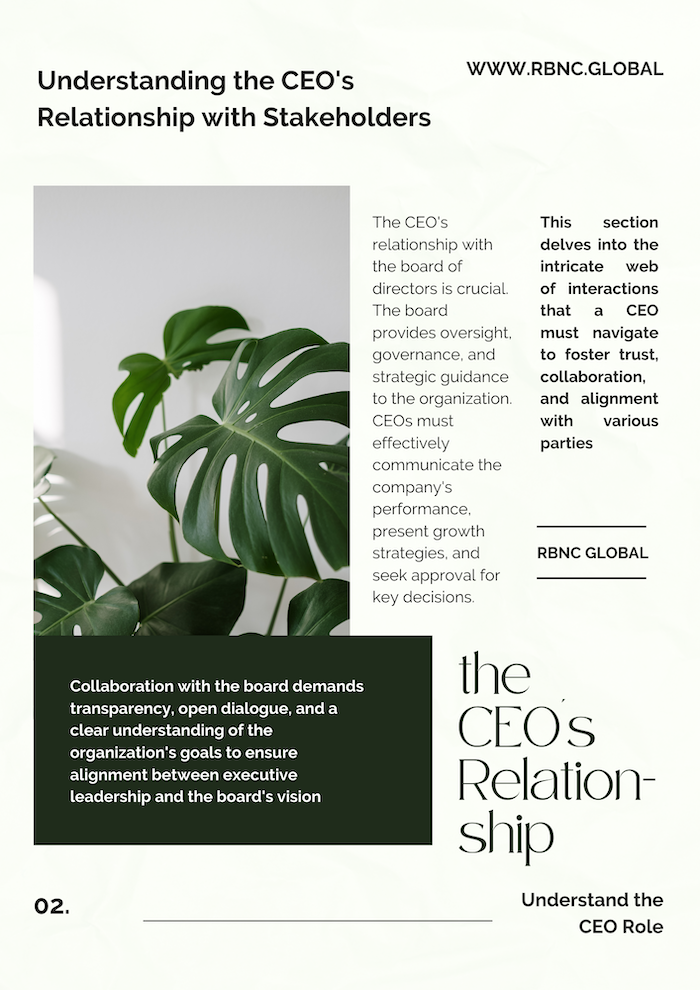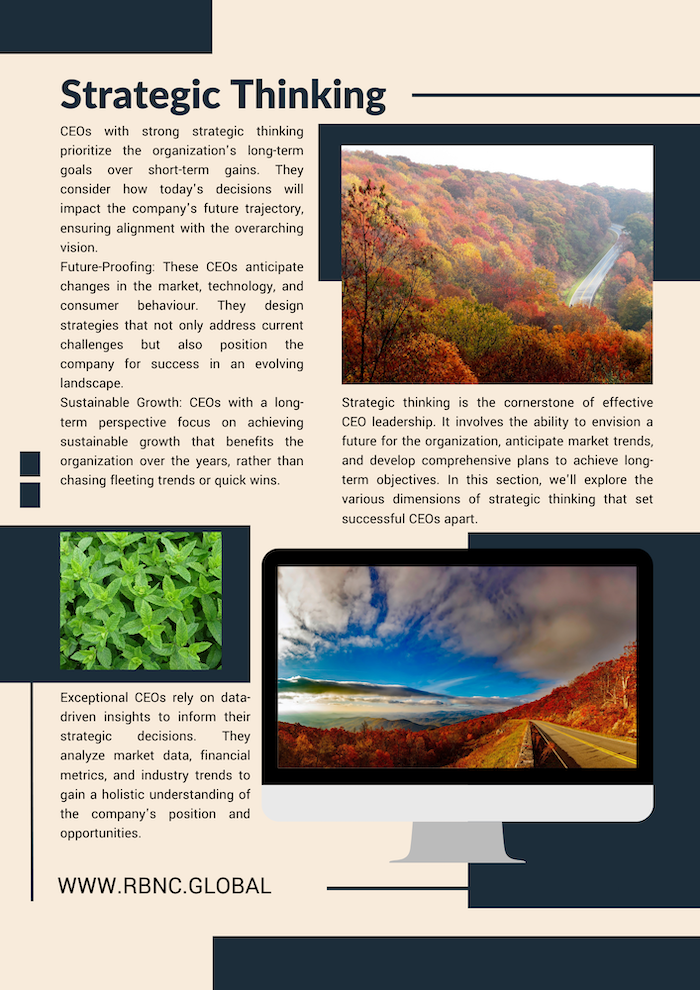Understanding the CEO's Relationship with Stakeholders
The role of a CEO extends beyond the organization itself; it involves building and maintaining relationships with a diverse array of stakeholders. This section delves into the intricate web of interactions that a CEO must navigate to foster trust, collaboration, and alignment with various parties.
The Board of Directors:
The CEO's relationship with the board of directors is crucial. The board provides oversight, governance, and strategic guidance to the organization. CEOs must effectively communicate the company's performance, present growth strategies, and seek approval for key decisions. Collaboration with the board demands transparency, open dialogue, and a clear understanding of the organization's goals to ensure alignment between executive leadership and the board's vision.
Shareholders and Investors:
A CEO serves as the primary interface between the company and its shareholders and investors. Transparent and regular communication is essential to keep these stakeholders informed about the company's financial performance, strategic initiatives, and future prospects. Effective CEO-investor relations instill confidence, attract investment, and contribute to long-term stability.
Employees:
The CEO's relationship with employees forms the foundation of a healthy and productive organizational culture. CEOs play a pivotal role in setting the tone for the workplace environment, instilling a sense of purpose, and promoting employee engagement. By championing open communication, recognizing achievements, and fostering professional growth, CEOs inspire a motivated and dedicated workforce that propels the company forward.
Customers and Clients:
A CEO's interactions with customers and clients are reflective of the company's commitment to delivering value. By understanding customer needs, engaging in meaningful interactions, and consistently delivering quality products or services, CEOs contribute to building customer loyalty and brand reputation. Customer-centric CEOs drive customer satisfaction, which in turn leads to sustainable business growth.
Media and Public Relations:
As the face of the company, CEOs are often in the spotlight of media and public attention. Effective communication skills are essential to convey the company's narrative accurately, manage potential crises, and project a positive image. A CEO's adeptness in addressing media inquiries and handling public relations plays a significant role in shaping public perception.
Government and Regulatory Bodies:
CEOs must navigate the complex landscape of government regulations and policies that impact the organization's operations. Building relationships with relevant governmental bodies, understanding compliance requirements, and advocating for the company's interests within the regulatory framework are critical for maintaining operational continuity.
Community and Social Responsibility:
CEOs increasingly play a role in addressing social and environmental concerns. A CEO's involvement in corporate social responsibility initiatives and community engagement projects can positively influence the organization's reputation and its impact on society. Demonstrating ethical behavior and commitment to sustainability reinforces the company's position as a responsible corporate citizen.
Conclusion:
A CEO's relationship with stakeholders is a dynamic tapestry that requires deft navigation, open communication, and a commitment to shared goals. Successful CEOs recognize that stakeholder engagement is not a one-way street; it's about building connections that foster mutual understanding, trust, and collaboration. By effectively managing relationships with the board, investors, employees, customers, the media, regulatory bodies, and the broader community, CEOs contribute to the company's holistic success and its impact on society at large.
Back to: Chapter 1: Understanding the CEO Role









